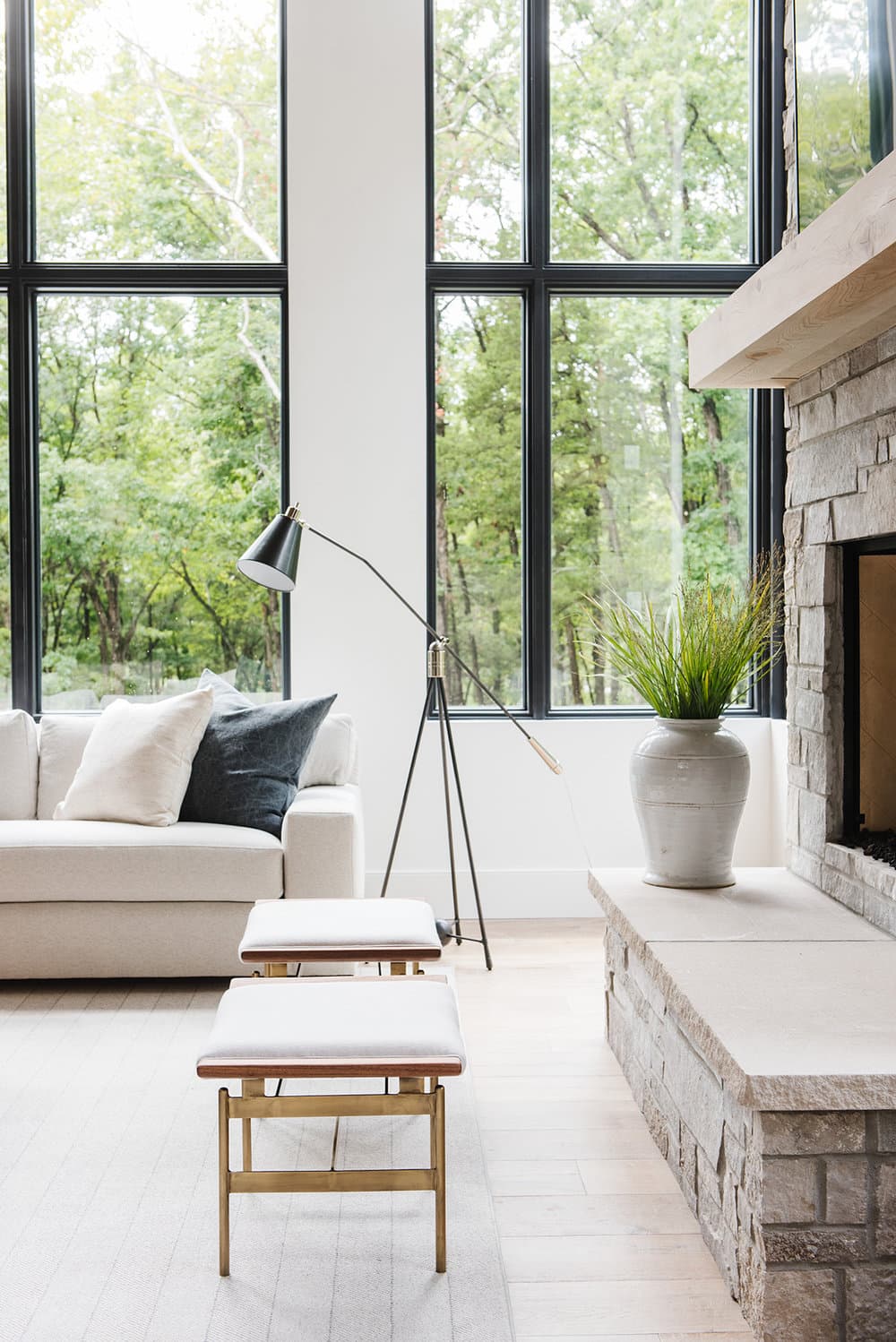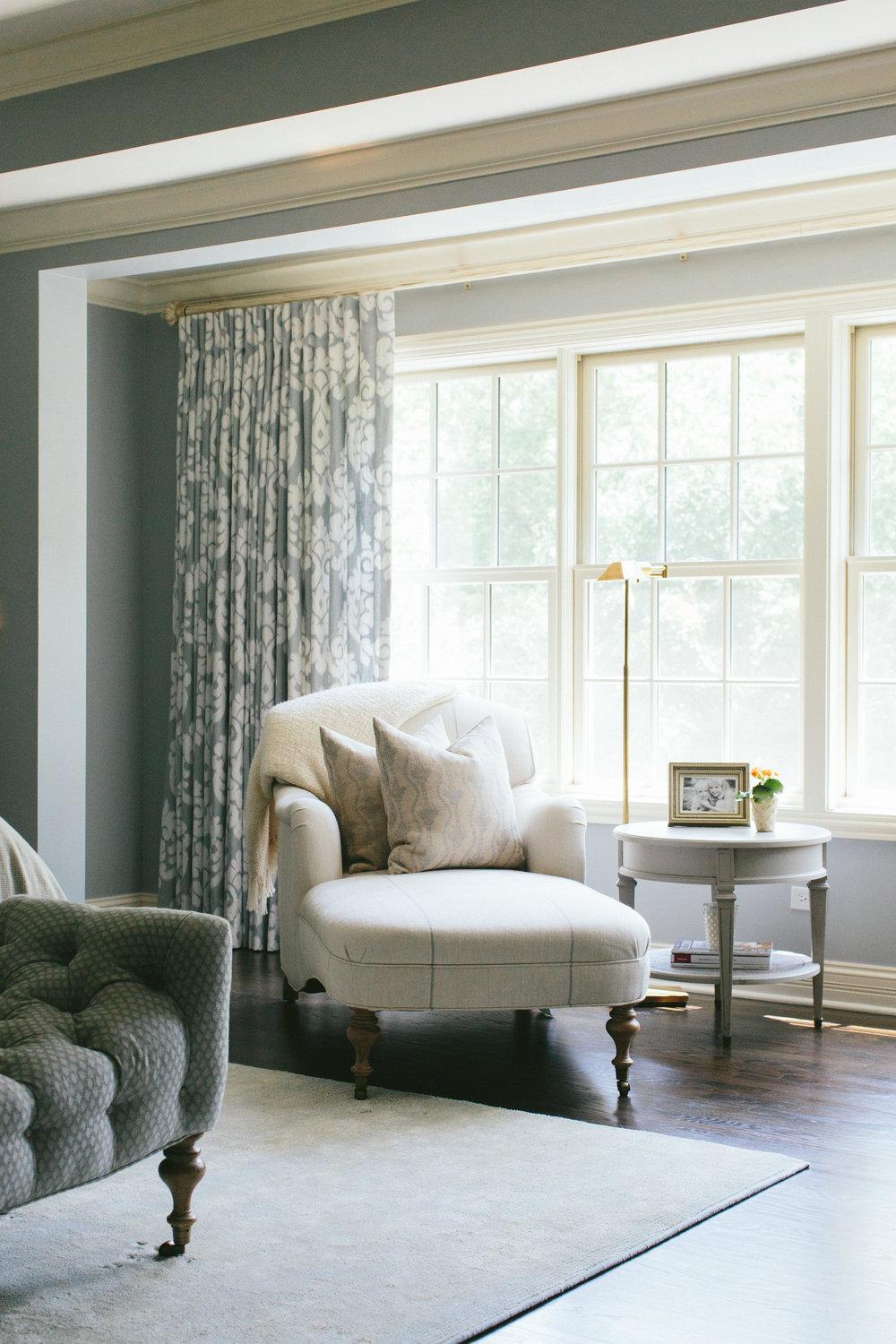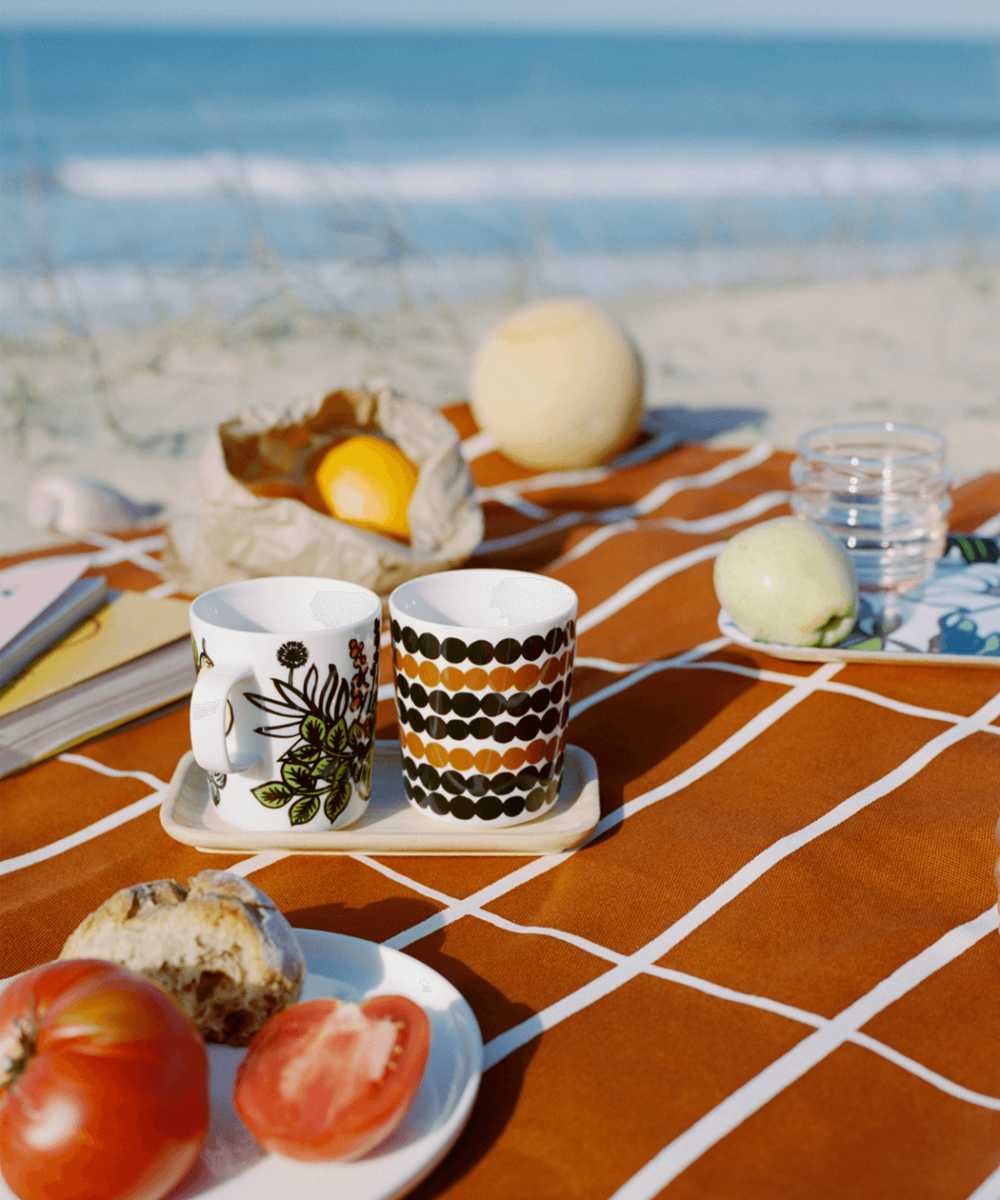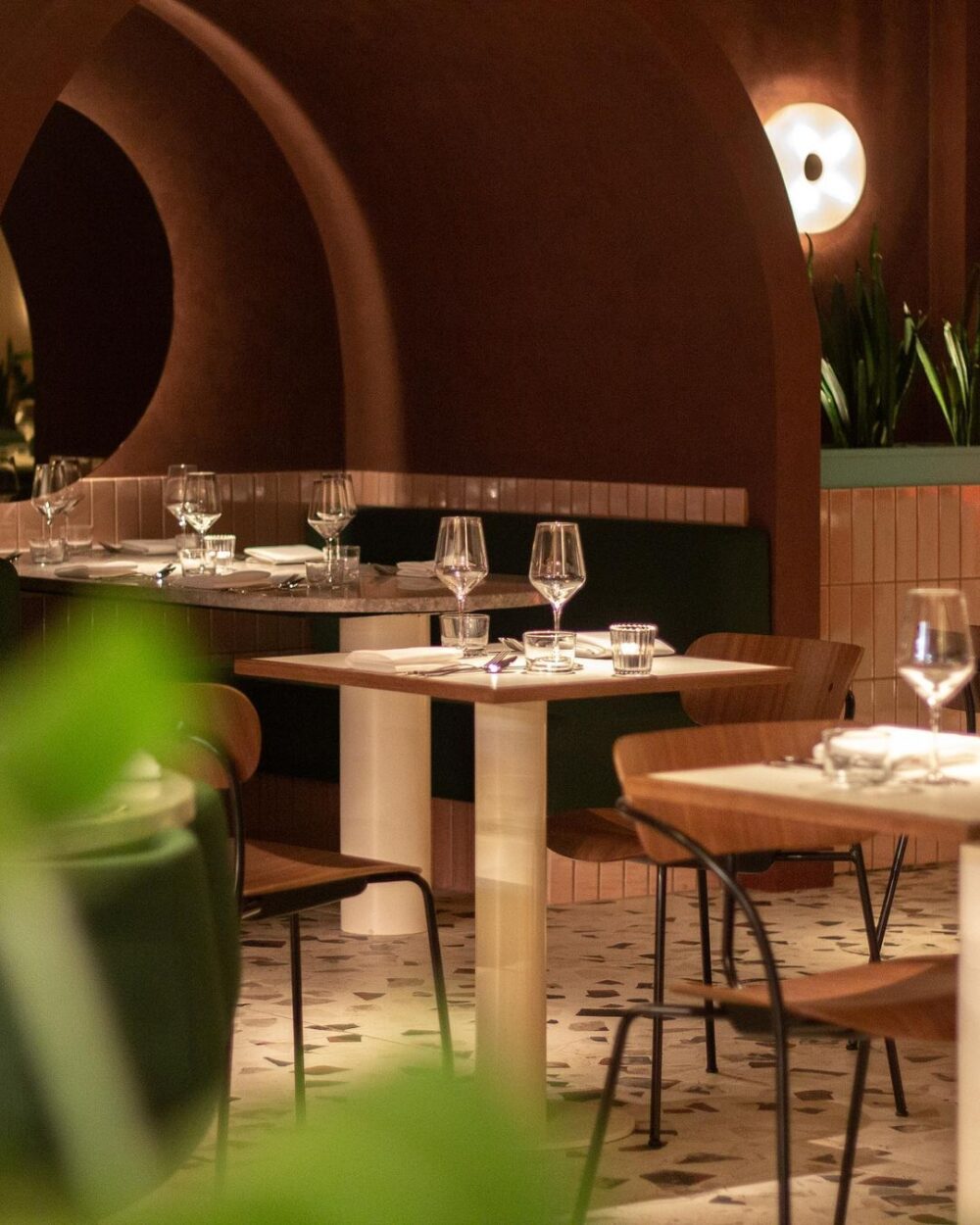6 Steps On How To Mix Shabby Chic Patterns Like A Pro
Our guide on how mix patterns when using fabrics and wallpaper for interior styles such as shabby chic like an interior design.

In many ways, we look to architecture and interior design to shape our human experience and heighten elements that consider our physical, mental, and emotional needs. The premise of taking a human-centred approach is one that’s becoming increasingly familiar in all realms of life. In the world of interiors, Biophilic design emphasises the importance of our environment and how we can influence our physical and sensory experience through interiors. How our homes are built and designed ultimately impact our emotions, health, and overall feeling.
So, what exactly is Biophilia? Biophilia is our tendency as humans to focus on and to connect with nature. For those potentially new to the concept, Biophilic design is much more than interiors and dates back as late as 1973. Psychoanalyst Erich Fromm first described the term as “the passionate love of life and of all that is alive”, and later caught wind of scientists alike including Biologist Edward O. Wilson, who suggested that our tendency to focus on and to affiliate with nature and other life-forms has, in part, a genetic basis.
In some respect, Biophilia has always been a part of us and it’s now become a job of ours to increase our chances of tapping into those innate longings for nature. Particularly now in a technologically-dense world that continues to fight for our attention and asks us to spend our time in everything but nature. Biophilic design is much more than interiors and its health benefits should not be ignored given today’s climate.


Intentionally adding more biophilic design into our homes can only be a positive change for interior design. Time again we’re startled by the effects of the smells, sounds, colours and other key elements from outdoors can have on our mental health as well as our physical well-being. As if we needed more convincing, adding natural elements in your our surrounded have been proven to inspire and boost creativity – now even more invaluable when working from home.
The core principles of Biophilic design are to improve our connection with nature, and in turn, reduces our stress and improves our wellbeing. Much of Biophilic design is to do with making the most of the sensory elements of nature and suggests when we design our home to consider the following elements:
This may all sound fairly weighty, and you’d be forgiven if you’re left asking ‘what does biophilic design look like at home and where do can I start?’ These principles are there to act as a guide and are rooted in the original conversations of what Biophilia is and what it encompasses, therefore, it can be adapted to work for you. By simply making a small few changes you’ll reap the benefits that biophilic design has been known to bring.
Lighting plays an important role when trying to looking to bring the best, and most essential parts of nature into our homes. We’re not all blessed with grandiose windows with views overlooking the Swiss Alps, however, we can all make the best out of what space we do have and how we go about adding natural elements that bring outdoors, in. Anything woven using natural elements is a must, and I particularly love Henna Woven Lamp Shade by MADE (£35) and Nkuku’s Beru Rattan Lampshade (£99).

Introducing an indoor jungle into your home can be an effective way to add greenery and add different textures to your interiors. While potted plants can be the perfect companion when looking to create a biophilic inspired space, it is worth considering what else can be done that stretches beyond the garden. For example, this Sisal Runner (£125) from Cox & Cox made of natural linen would be a gorgeous addition to any kitchen or entranceway.

The biophilic design aesthetic is centred around a neutral colour palette, inspired by nature. The assumption might be that to achieve a calming nature-inspired aesthetic, white is the way to go, allowing the decor and furnishing to create the nature-infused atmosphere. However, that needn’t be the case if you’re looking for a little more zest to achieve a lot of zen.
Almost Tuscan in its shade, Dulux’s Colour of the Year Brave Ground offers a beautiful and warm neutral feel in a room without being overpowering. When paired with the likes of Spiced Honey you open the room up to a stunning pop of colour, allowing you to work in natural elements in new dynamic ways.

To create a connection to the natural environment, the materials you decide to incorporate in your home interiors are important. Aesthetically natural materials create a richer experience, adding different textures and offer plenty of wellbeing benefits. The biophilic design encourages us to interact with the space around us, the principles call on us to look beyond simply the visual aesthetics and instead how we can use sounds, smells, and textures that invigorate all of our senses. Look for ways to incorporate natural materials that encourage us to touch and feel the textures.
From wool fabrics to wooden furniture there are numerous ways to design a home inspired by biophilic design. Is it any wonder that Boucle is ever-growing in popularity? The lovely looped fabric invites us to touch, feel, and curl up in to. This Jute Rug (£79) by MADE sprawled out in your living room or dining area, will tie in these natural elements that biophilia calls for effortlessly.

While almost everything has, and is, becoming urbanised tapping into our innate connection to nature feels like the antidote to our busy, often stressful lives. Biophilic is as much a philosophy, as it is a science, as it is an approach to design. If you can go ahead and consciously bring the biophilic principles into your home, it will most certainly be worth it.
Photo credits: 1-2. Studio McGee 3. Nero Interior 4. The Hunter House 5. The Hunter House 6. Nordroom

Our guide on how mix patterns when using fabrics and wallpaper for interior styles such as shabby chic like an interior design.

Adopt a sustainable way of living with these Scandinavian-based sustainable brands working towards a better future.

Situated in Liverpool's Commercial District is a restaurant that celebrates Northern heritage and takes influence from the Nordic Region, specifically Scandinavia. A blend that looks as good as it tastes.